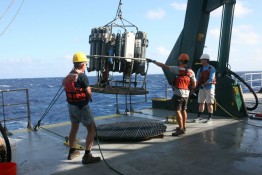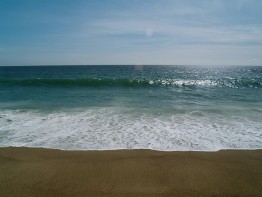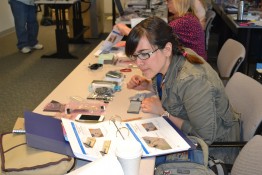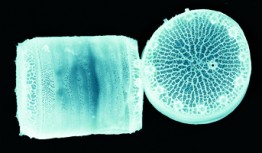Sunburst Sensors, based out of Missoula, MT, grabbed the two top spots in the Wendy Schmidt Ocean Health XPRIZE, receiving a $1.5 million award for advancing scientist’s ability to measure ocean chemistry as it relates to ocean acidification. Designed as a competition to spur innovation, teams from around the globe competed to develop the most promising technologies in two categories: a device that is easy to use and cost effective and a device that is highly accurate when tracking ocean acidification.
Read more »Scientists weigh in on carbon emissions' effect on future ocean conditions
Ahead of major climate talks at COP21 this year in Paris, scientists are offering insights to the far-reaching effects of rising carbon dioxide levels on the ocean. Spearheaded by the Oceans 2015 Initiative, which brought together 22 scientists and policy experts from nine different countries, the results were published this week in the journal Science and focus on how warming waters, rising seas, and ocean acidification drive changes to the global ocean.
Read more »UW scientists engage the next generation of oceanographers through STEM partnership
For nearly 40 Washington State teachers attending the Olympic STEM Pathways Partnership workshop at the University of Washington in late-June, it was like Christmas had come early. Each educator sifted through a toolkit full of techy gadgets—a breadboard, ribbon cables, wires, antennas, and a microprocessor. The teachers used their cache of materials to assemble a powerful, data-collecting underwater sensor; and over the next several years, they’ll develop an approach to bring their new expertise back into the classroom.
Read more »Genetic switch lets marine diatoms do less work at higher CO2
Tiny drifting algae called diatoms generate about 20 percent of the oxygen produced on Earth each year—more than all of the world’s rainforests. A new study from the College of the Environment’s School of Oceanography and Seattle’s Institute for Systems Biology looked at how common species of diatoms will adjust to sudden and long-term increases in carbon dioxide. The scientists found that when CO2 spikes, as might happen during a sudden change in ocean currents, the diatoms produce a signaling molecule that reduces the energy-intensive process required to concentrate the carbon dioxide.
Read more at UW Today »UW's Friday Harbor Labs prove to be a prime spot to study ocean acidification
For more than a century, scientists at UW have utilized Friday Harbor Laboratories’ unique location on the shores of the Puget Sound to study a variety of marine species. With the debut of the Ocean Acidification Environmental Laboratory in 2011, research at Friday Harbor Labs expanded into monitoring the water’s pH and dissolved oxygen levels, total alkalinity, effects of ocean acidification, and strategies for adaptation.
Read more at UW Today »





